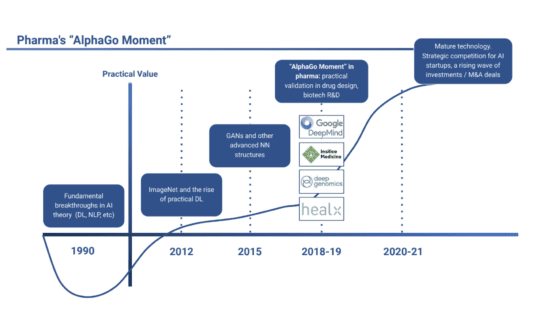Built on language models, artificial intelligence-powered generators such as ChatGPT can be made to read the codes that make up the building blocks of the human body. Research has found that it’s possible to develop a generalizable program—a “genomic language model”—that could be applied to a variety of different tasks, instead of requiring scientists to build fit-for-purpose AIs to chase answers for each major biological question. For example, Nvidia has been working with the synthetic biology company Evozyne to build a large language model focused on constructing never-before-seen proteins
AI drug discovery platforms drive the following outcomes:
- Lowered drug discovery costs by up to 90%
- Reduced discovery and lead optimization times
- Faster time-to-trial for drugs
- Larger datasets (through medical literature, omics datasets, clinical trials data and more)
- Better optimized drug designs
- Ability to repurpose existing medications or target diseases that were previously “undruggable”
It can achieve this through several mechanisms
- Simulating drug interactions, including protein-protein, ligand structure, antibody therapies and more
- Analyzing omics databases for identifying optimal gene targets
- Using natural language processing (NLP) for extracting data from scientific literature
- Using computer vision for cellular image analysis
- Powering molecular databases for predicting optimal small molecule designs
Putting genomics front and center could help us to better understand the biology of diseases, which would drive efficiencies and cut research and development costs while allowing us to bring targeted drugs to patients in record time. Used in combination with genomics, AI could help pharma companies to develop new drugs for rare diseases. The rarer a disease is, the smaller the market is and so the less likely it is to have been addressed. Big pharma is hesitant to take on the high development costs for new drugs if there’s no sign of a return on investment.






